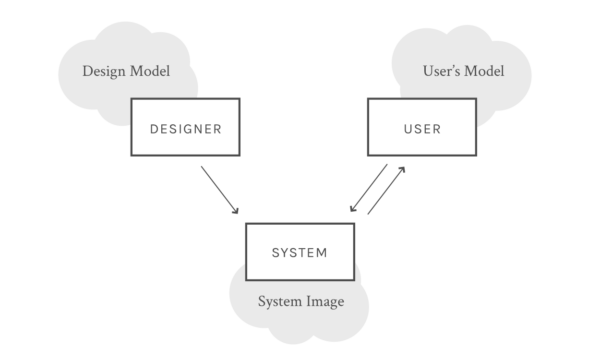The Design of Everyday Things • Don Norman • 1988
On the Communication of Conceptual Models Through Design
In Short
A user relies on the system image of a product to form an understanding of how to use it, so the designer’s conceptual model needs to be carefully and thoughtfully mapped to the system image.
In Depth
Norman’s roots in cognitive science manifest in the way he describes the function of design between designer, product, and user.

The design model is the designer’s conceptual model. The user’s model is the mental model developed through interaction with the system. The system image results from the physical structure that has been built (including documentation, instructions, and labels). The designer expects the user’s model to be identical to the design model. But the designer doesn’t talk directly with the user—all communication takes place through the system image. If the system image does not make the design model clear and consistent, then the user will end up with the wrong mental model. (p.16)
This model of models conceptualizes interaction as a form of communication between designer and user mediated through a designed object. It’s a useful way to think about design when we want to focus on design as a functional affair that attempts to achieve a goal. It lets us focus on inputs and outputs from the user as isolated channels to address in the design. This approach informs many of the ideas in the book including mapping, feedback, affordances, and constraints.
But it also seems worth recognizing what Norman’s framing leaves out of the picture. The view of interaction presented focuses on the somewhat mechanical abstractions of how the mind forms goals, perceives the world, and takes action. This foundation tends to de-emphasize broader ideas about context, nuances of social interaction, and cultural impact of design. Even the premise here that the designer has a particular way for a product to be used and the user a distinct way that they want to use it is worth re-examining under different philosophical lenses.
Still, this doesn’t take away from the usefulness of Norman’s approach when accounting for the details of usability and functionality.